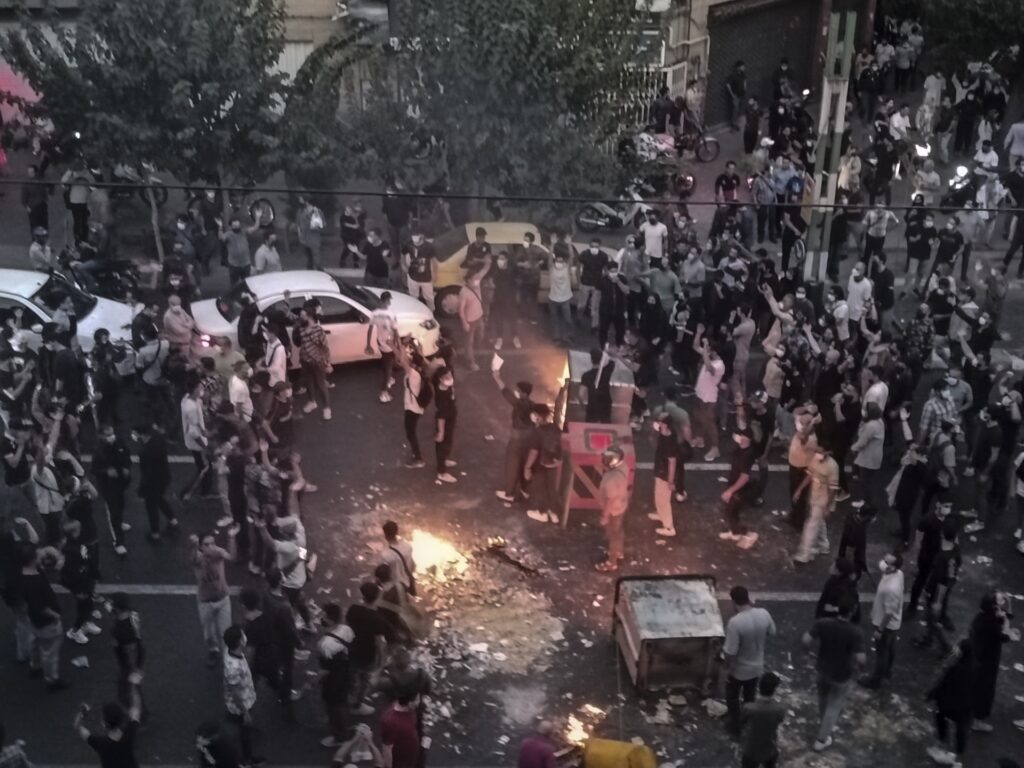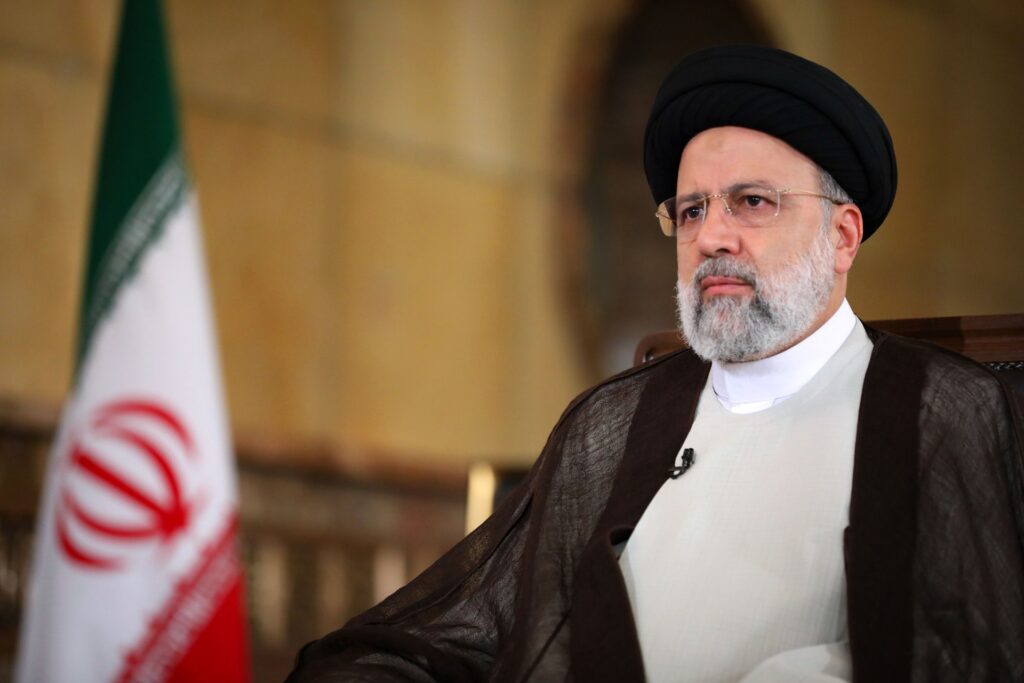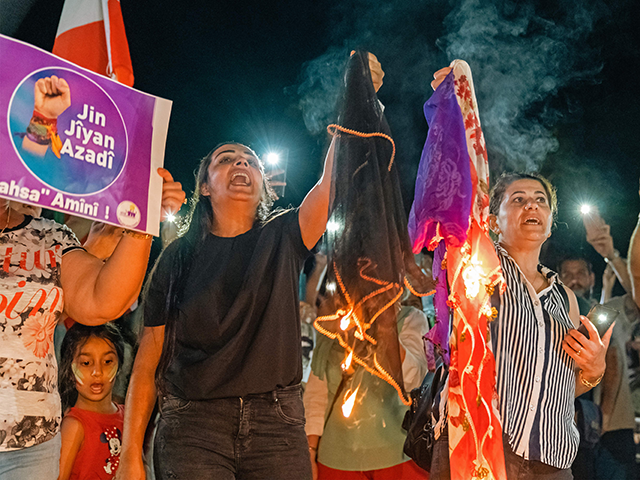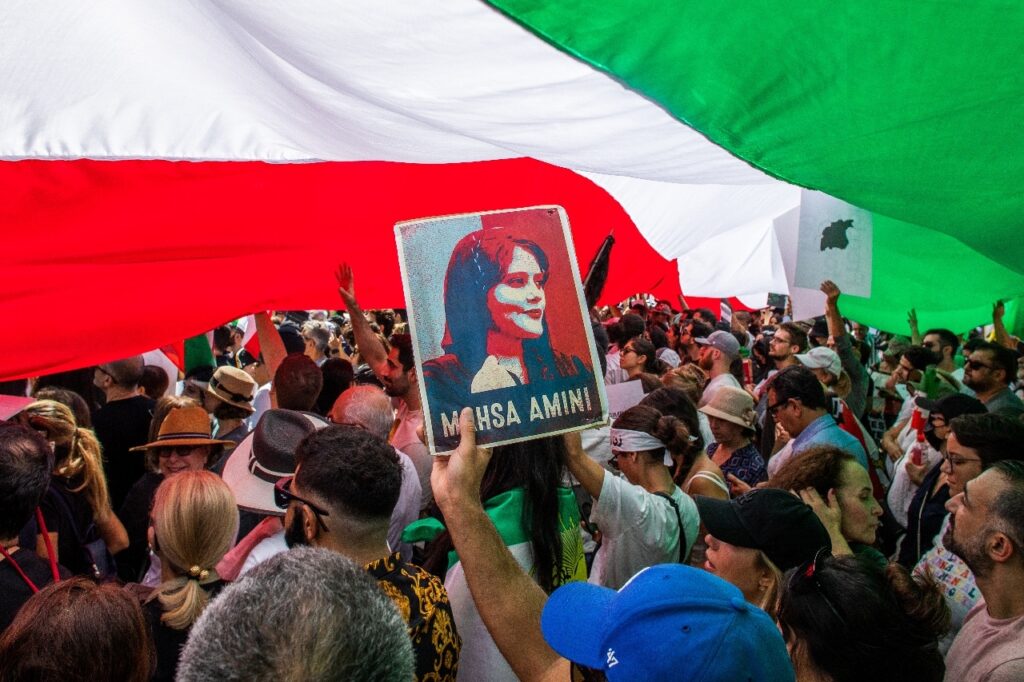Images of unveiled Iranian women protesting against the Islamic regime of Iran following the death of young woman in police custody risk producing “misogynistic assumptions that the veil is a universal marker for oppression,” warned a recent Washington Post essay, which also argued such depictions risk “legitimizing foreign intervention, from increased sanctions to warfare.”
The Thursday article by Morgan State University assistant professor of history Sara Rahnama, titled “Images of unveiled Iranian protesters inspire. But there are risks, too,” expressed opposition to additional sanctions against the Islamic regime — the largest state sponsor of terrorism worldwide — claiming they ultimately hurt Iranian women.
Via @madebyhistory: Depictions of unveiled Iranian women may reproduce misogynistic assumptions that the veil is a universal marker for oppression. https://t.co/DL5fJctuwS
— Washington Post Opinions (@PostOpinions) October 21, 2022
Rahnama noted how the world has been watching as many Iranian women have taken to the streets to protest mandatory hijab laws and the brutal Islamic Republic of Iran, triggered by the death of a young woman named Mahsa Amini in the custody of the regime’s notorious “morality police” for allegedly violating the country’s strict dress code for women last month
“Every day, Iranians — inside and outside of Iran — post new images and videos from the protests,” including many depicting women engaged in “civil disobedience” by appearing unveiled publicly, “and ask the world to amplify the voices of those chanting: ‘Women, life, freedom!’” she writes.
Though the U.S. has “expanded sanctions” against the theocratic regime in response, with some politicians and pundits calling for “even more” measures to curb the Islamic Republic, the author claims “the severity and wide breadth of U.S.-imposed sanctions have had a deadly impact.”
“Sanctions limit Iran’s ability to purchase essential medical devices, supplies and raw materials needed, for example, to make medicine,” she writes. “Meanwhile, sanctions have helped to create conditions in which ordinary Iranian businesses are unable to compete with state-affiliated companies.”

Iranians protest a 22-year-old woman Mahsa Amini’s death after she was detained by the morality police, in Tehran, September 20, 2022, in this photo taken by an individual not employed by the Associated Press and obtained by the AP outside Iran. (AP Photo/Middle East Images)
In addition, the author argues, “women and working-class Iranians are among the most vulnerable to the impact of sanctions.”
“That means there is a real danger in how the recent images of unveiled Iranian women are being deployed to argue for further sanctions and intervention,” she writes.

In this photo released by the official website of the office of the Iranian Presidency, President Ebrahim Raisi attends an interview with the state TV at the presidency office in Tehran, Iran, Wednesday, Sept. 28, 2022. (Iranian Presidency Office via AP)
However, such a move, claims Rahnama, “would not be the first time that depictions of Muslim women have been used to legitimize harmful foreign interventions,” as she notes the “European obsession with the oppression of Muslim women.”
“In the 19th century, for example, the French deployed images of oppressed Muslim women as a tool to popularize the colonization of Algeria, the confiscation of Algerian land and institutions and the continued war during the Algerian War of Independence,” she writes.
“Though the historical and geographical contexts differ, revisiting the history of Algeria reminds us how ideas about emancipating oppressed Muslim women have been seductive for global audiences,” she adds.
Claiming states “have used such ideas to build popular support for foreign interventions that ultimately harmed the women they claimed to want to rescue,” Rahnama, a historian of gender and Islam in colonial Algeria, insists such history “reminds us to question such depictions of Muslim women more critically.”
She also cites how, in the past, images of subjugated Muslim women were “pivotal to the French colonial project,” with the French army’s psychological warfare bureau launching “unveiling campaigns and veil burning ceremonies to demonstrate to international audiences that France was emancipating and modernizing women as part of a broader project.”
“For the French, this was particularly symbolic because they had made the veil into a symbol of backwardness,” she writes, adding that in response some Muslim women initially “began donning the haïk” as a means of “insisting on their right to their own religion and culture.”
According to the author, “the history of how ideas about gender and Islam were weaponized in colonial Algeria remains relevant today,” as “the obsession with the veil as a marker of constraint was neither unique to France nor something only of the past.”
She brings several examples, including then-Rep. Carolyn B. Maloney (D-NY) appearing on the U.S. House floor in 2001 in a burqa “to call for war against the Taliban to save Afghan women,” and when that same year first lady Laura Bush “took over the president’s weekly radio address to frame the War in Afghanistan as a fight to ensure Afghan women could live freely.”
In addition, she cites how then-President Donald Trump “decided to recommit more soldiers to Afghanistan after being shown a photograph of Afghan women wearing miniskirts in 1972.”
Rahnama also claims that Iranian women seen protesting Iran’s mandatory hijab laws in recent weeks have been “clear” they are “not protesting hijab or Islam, but rather the imposition of hijab laws and the Islamic Republic itself.”
“Like colonial postcards, while social media facilitates the quick mass consumption of images, it cannot convey important context about both Iran and the longer, global history of representations of Muslim women,” she writes.
“The way images of unveiled Iranian women are being consumed risks reproducing the same misogynistic assumptions that the veil is a universal marker for oppression — or potentially even legitimizing foreign intervention, from increased sanctions to warfare,” she adds.
The author concludes that “Iranian women, like all Muslim women, deserve to live without their agency constricted, either by an Islamic regime or by foreign intervention.”
In response to the piece, many expressed outrage over what was deemed “Islamic Republic propaganda,” with some accusing the author of “glorifying” veiling and attempting to “strengthen” the brutal Islamic regime.
“The author is either totally clueless or has a personal interest in distorting the reality,” one response reads. “Women in iran are FORCED to wear hijab whether they are or practicing Islam or not. Protests are being cracked down with utmost brutality. Sanctions are put in place bc of regime nuclear ambitions and a long history of meddling in Middle East.”
“Nobody on the streets of iran chanting and asking for sanction relief!!!!” the commenter added.
“As an Iranian women who has been living in Iran for more than 30 years, after reading this article I feel frustrated, hopeless and disappointed that the west doesn’t want to hear us,” another response reads. “People in Iran are getting killed on a daily basis on the streets so a naive person can use them to promote their own agenda? It is a huge insult to us that we are getting killed to stand against hijab and beg the other countries to sanction these murderers and then someone sitting in the states writes an article and ask for sanction relief?”
“If you can’t be helpful at least leave us alone in our misery,” she added. “I am shocked how careless and selfish a person can be to try to silence us and tell their own false narrative.”
“An American academic of Algeria is worried that images of women protesting in Iran would be used to ‘argue for further sanctions & intervention,’” wrote one Twitter user.
“She doesn’t hear what Iranian ppl are calling for,” the user added. “This shows just how academia is detached from reality.”
Another user accused the Post of being “so disgusting when it comes to Iran.”
“Ali Khamenei couldn’t have had better allies with all his oil money,” the user added. “I couldn’t read halfway through, it made me cringe.”
“What she wrote is an absolute nonsense, and is the Islamic Republic propaganda being spread by its apologists,” wrote another.
“This is irresponsible coverage by @washingtonpost & a complete overreach by the author,” wrote one Twitter user. “Recent sanctions target military leaders, orgs and assets. & I’m pretty [sure] it’s videos of women being beaten & killed that provoked them, not women taking off their veils.”
This is irresponsible coverage by @washingtonpost & a complete overreach by the author. Recent sanctions target military leaders, orgs and assets. & I’m pretty it’s videos of women being beaten & killed that provoked them, not women taking off their veilshttps://t.co/tykTpytohi
— Parichehr Kazemi (@Paricherry_) October 20, 2022
“An article with so many halftruths, lies, inaccuracies and so generously laced with ignorance is laughable at the best of times, but now it’s outright insensitive and potentially dangerous,” wrote another.
“Academia (mostly educated, informed and left leaning) has been in bed with the mullahs for a long time,” another user wrote.
“[T]he fact that you are protecting Hijab while you’re living in secular country while teenager women are killed, And you think sanctions are gonna harm veiled women in Iran is despicable,” wrote yet another.
The essay comes as massive protests continue to sweep Iran following the death of 22-year-old Mahsa Amini while in the custody of the Islamic theocracy’s notorious “morality police” for violating strict requirements for women to keep their heads covered in public.
More women in #Iran🇷 set fire to their headscarves tonight during the fifth night of protests in Iran over the death of Mahsa Amini, 22, following her arrest by morality police over the mandatory hijab law. pic.twitter.com/UNXmjxWx2s
— David Patrikarakos (@dpatrikarakos) September 20, 2022
Amini was reportedly abducted and killed by the force for having exposed some hair from beneath her mandatory Islamic headscarf.
As a result, women cutting off locks of hair has become an international gesture of solidarity with Amini and the other oppressed women of Iran.
Iranian officials have unconvincingly claimed she died of natural causes after the patrol stuffed her in a van and carted her off to a grim detention center.
However, her family insists she had no life-threatening health problems.
On Sunday, representatives of Iran’s parliament in exile, the National Council of Resistance of Iran (NCRI) claimed Iran is currently witnessing a revolution “in the making,” asserting that despite the crimes and “savagery” committed by the regime’s “suppressive forces” — including the killing and torturing of protesters during current protests against the Islamic regime by angry citizens — the Islamic Republic is no longer capable of containing the current uprising which has entered its fifth week.
Follow Joshua Klein on Twitter @JoshuaKlein.


COMMENTS
Please let us know if you're having issues with commenting.